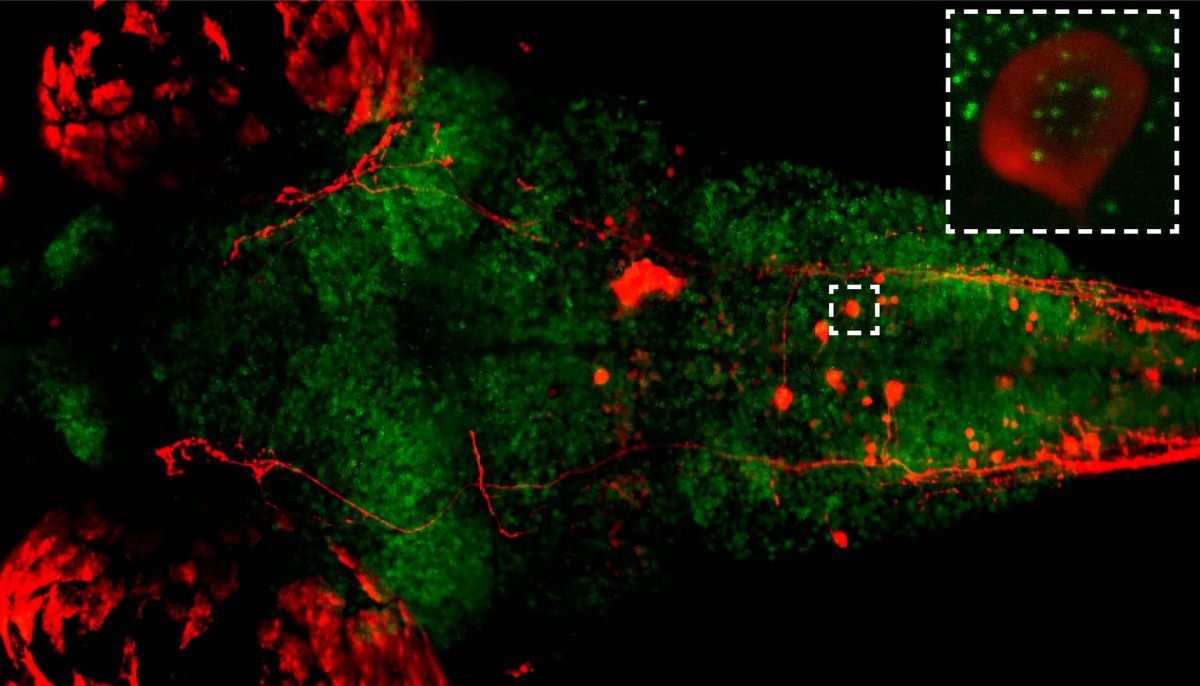
Brain cells - Credit:SWNS
Sleep is the downtime that allows our nerve cells to perform vital “maintenance” tasks, suggests a new study.
Scientists say their groundbreaking research may finally explain why people spend around a third of our lives asleep.
And the surprise discovery may also explain how sleep and sleep disturbances affect brain performance, ageing and various brain disorders, according to the researchers.
Throughout evolution sleep has remained universal and essential to all organisms with a nervous system – including invertebrates such as flies, worms, and even jellyfish.
But the reason why animals sleep – despite the continuous threat of predators – still remains a mystery, and is considered among the biggest unanswered questions in science.
In the new study, published in the journal Nature Communications, researchers at Bar-Ilan University in Israel revealed a new and unexpected function of sleep.
Using 3D time-lapse imaging techniques in live zebrafish, the team was able to define sleep in a single chromosome resolution and show, for the first time, that single neurons require sleep in order to perform nuclear maintenance.
DNA damage can be caused by many processes including radiation, oxidative stress, and even neuronal activity. DNA repair systems within each cell correct this damage.
The current work shows that during wakefulness, when chromosome dynamics are low, DNA damage consistently accumulates and can reach unsafe levels.
The role of sleep is to increase chromosome dynamics, and normalise the levels of DNA damage in each single neuron.
Apparently, the DNA maintenance process is not efficient enough during the ‘online’ wakefulness period and requires an ‘offline’ sleep period with reduced input to the brain in order to occur.
Study leader Professor Lior Appelbaum, of Bar-Ilan University, said: “It’s like potholes in the road.
“Roads accumulate wear and tear, especially during daytime rush hours, and it is most convenient and efficient to fix them at night, when there is light traffic.”
Prof Appelbaum calls the accumulation of DNA damage the “price of wakefulness”.
He and his colleagues hypothesised that sleep consolidates and synchronises nuclear maintenance within individual neurons, and set out to confirm the theory.
Their discovery was achieved thanks to the characteristics of the zebrafish model.
With their absolute transparency, and a brain very similar to humans, the researchers described zebrafish as the ‘perfect’ organism in which to study single cell within a live animal under physiological conditions.
Using a high resolution microscope, the movement of DNA and nuclear proteins within the cell – inside the fish – can be observed while the fish are awake and asleep.
The researchers were particularly surprised to find that chromosomes are more active at night, when the body rests, but the increased activity enables the efficiency of the repair to DNA damage.
Prof Appelbaum said the results establish chromosome dynamics as a potential marker for defining single sleeping cells and propose that the restorative function of sleep is nuclear maintenance.
He said: “We’ve found a causal link between sleep, chromosome dynamics, neuronal activity, and DNA damage and repair with direct physiological relevance to the entire organism.
“Sleep gives an opportunity to reduce DNA damage accumulated in the brain during wakefulness.”
Prof Appelbaum added: “Despite the risk of reduced awareness to the environment, animals – ranging from jellyfish to zebrafish to humans – have to sleep to allow their neurons to perform efficient DNA maintenance, and this is possibly the reason why sleep has evolved and is so conserved in the animal kingdom.”